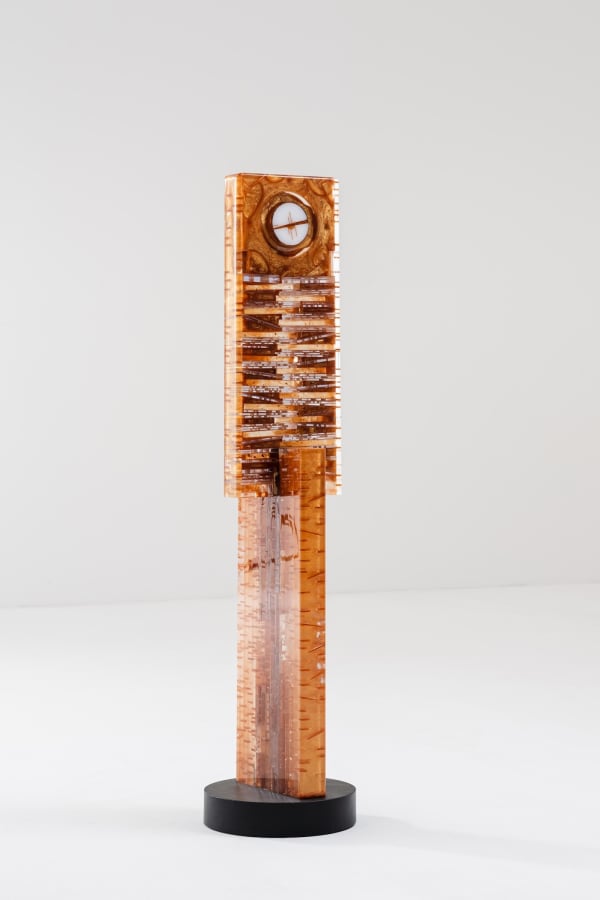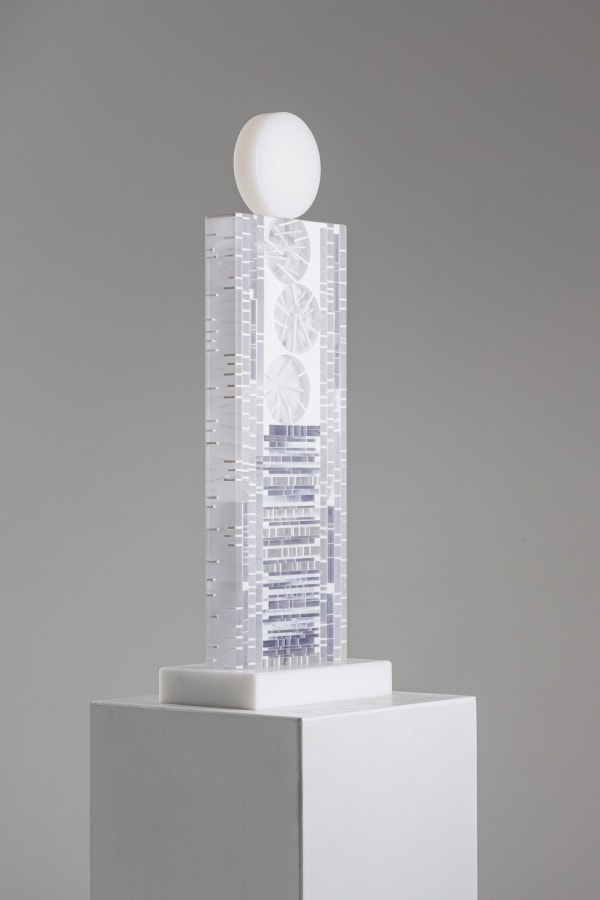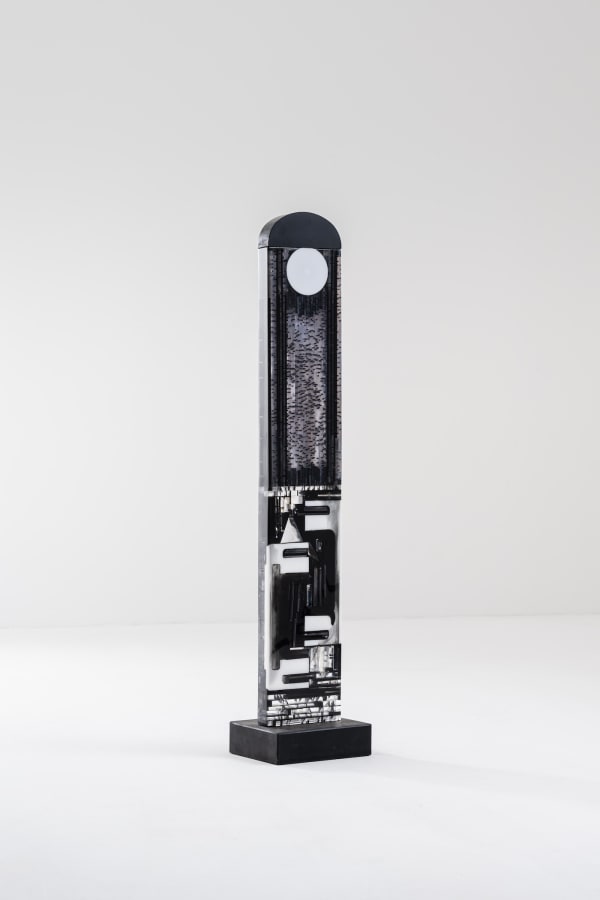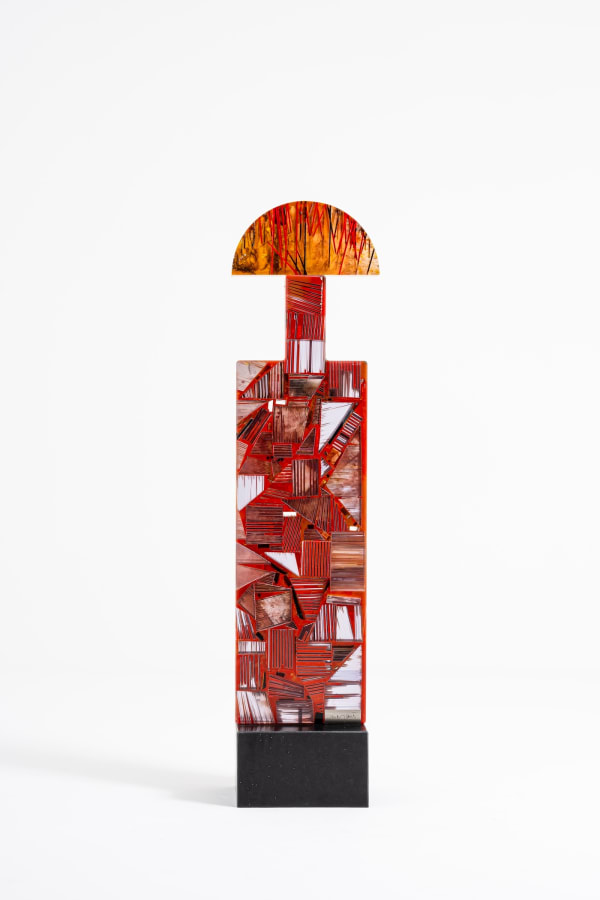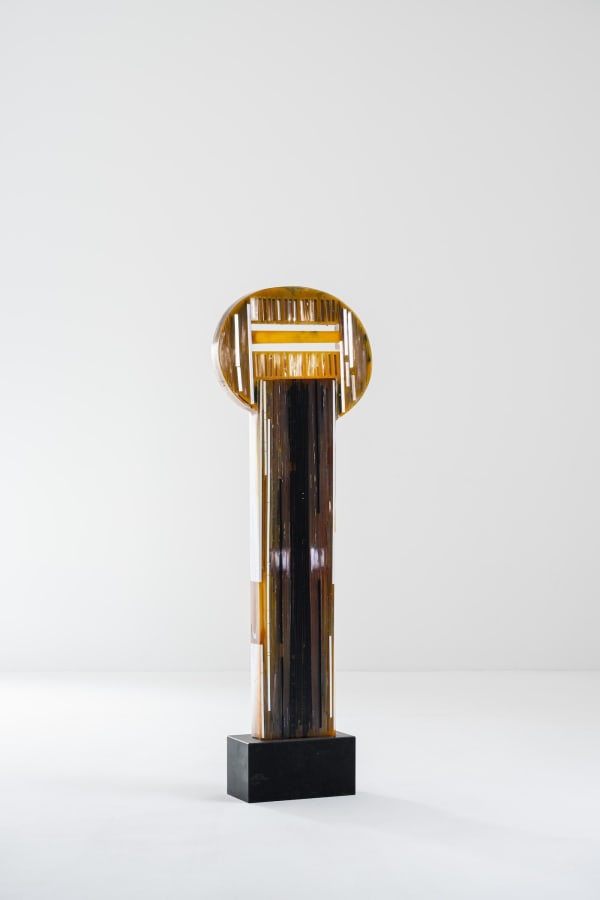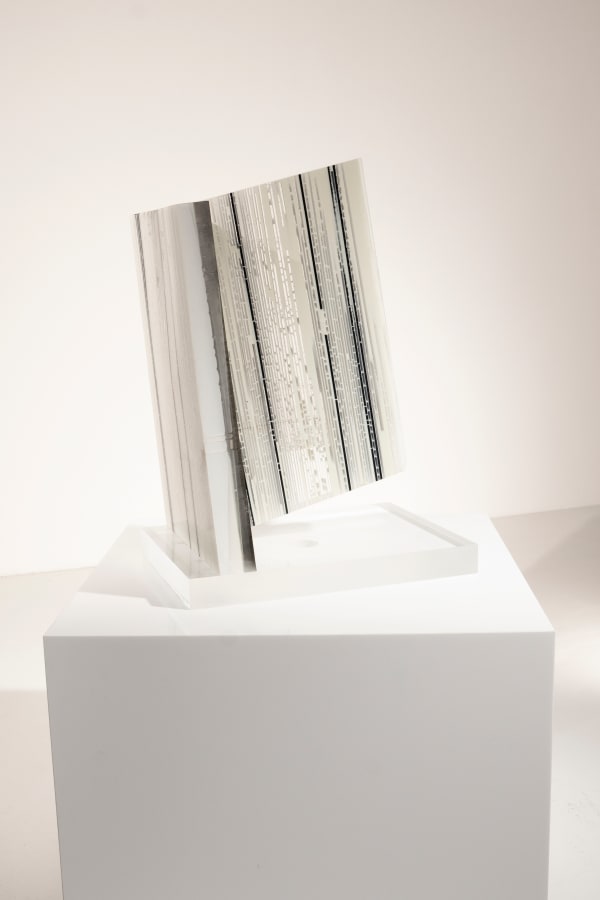Monique Rozanès
A New Form of Sculptural Art
Born in 1936 in Bordeaux to a family of Egyptian descent, with roots tracing back to Sephardic heritage, Monique Rozanes began her artistic journey at the École Nationale Supérieure des Arts Décoratifs in Paris in 1955, alongside notable contemporaries including Olivier Mourgue, Guy de Rougemont, Jean-Michel Wilmotte, and Jean-Philippe Lenclos.
A pioneer in the experimentation of synthetic resin in the arts, Rozanes stands as a singular figure of the 20th century devoted to the exploration of plastic materials. Initially using resin to preserve burned canvases, she soon recognized the inherent potential of the material itself, harnessing the medium's translucent qualities to remarkable effect.
Starting with the remarkably transparent liquid Methyl Methacrylate, Rozanes sculpted blocks which she would then intricately cut and assemble, layer upon layer, through a specialized fusion method. Their impeccably polished, transparent surfaces unveil an internal tapestry of geometric forms and colors, dynamically shifting with the play of light and the observer's perspective.
Between France and Argentina: Cultural Fusion
In the 1960s, Rozanès embarked on a transformative journey to the United States where she was captivated by the modern architectural marvels of New York, particularly the towering glass skyscrapers. Upon her return to France, Rozanès sought new artistic horizons, affiliating herself with a collective of esteemed artists in Nogent-sur-Marne, among them Agustín Cardenas, Alberto Guzman, Victor Roman, Fred Brouard, and Leopoldo Novoa.
In 1980, Rozanes experienced a poignant homecoming when she was selected by Jean-Dominique Rey to represent France at the International Biennale in Alexandria, Egypt. Claiming the Premier Prix, she captivated the Egyptian audience and immersed herself in the awe-inspiring monuments of Luxor and Karnak, relishing the grandeur of the pyramids.
That same year, Rozanes embarked on a new chapter, relocating to Argentina with fellow artist Leopoldo Torres-Agüero, where she found inspiration in the rich tapestry of Pre-Columbian America, the Tiwanaku culture, and the breathtaking landscapes of Patagonia. Her talents were duly recognized with the prestigious Premier Prix at The National Salon of Visual Arts in Buenos Aires in 1988.
A Lifetime of Artistic Creations
Following the passing of her husband in 1995, Rozanes remained steadfast in her artistic pursuits, dividing her time between France and Argentina. This period was notably marked by a tireless dedication to showcasing her work through exhibitions across the two countries. In 2002, she established the Torres Agüero / Rozanes Foundation, with a mission to curate collaborative exhibitions, including ventures into the United States, and to champion the endeavors of emerging artists.
The prolific creation of Monique Rozanes has shown no signs of slowing with the passage of time; well into her 80s in the 2020s, she continues to produce art that resonates with profound vitality. Since 1956, her oeuvre has been celebrated through a plethora of solo exhibitions hosted internationally including Chartres in France, La Chaux-de-Fonds in Switzerland, and La Rioja in Argentina.
-
 "La Lune Blanche", 2025See More
"La Lune Blanche", 2025See More -
 "Camasca d'Or", 2024See More
"Camasca d'Or", 2024See More -
 "Idole", 2024See More
"Idole", 2024See More -
 "Jaune d'Or", 2024See More
"Jaune d'Or", 2024See More -
 "Le Regard", 2024See More
"Le Regard", 2024See More -
 "Noir à la Lune Blanche", 2024See More
"Noir à la Lune Blanche", 2024See More -
 "Rêve Musical", 2024See More
"Rêve Musical", 2024See More -
 "Blanche", 2023See More
"Blanche", 2023See More -
 "Code Secret", 2023See More
"Code Secret", 2023See More -
 "Homage à Torres-Agüero", 2023See More
"Homage à Torres-Agüero", 2023See More -
 "Immortelle Bleue", 2023See More
"Immortelle Bleue", 2023See More -
 "La Gazelle", 2023See More
"La Gazelle", 2023See More -
 "Masaï", 2023See More
"Masaï", 2023See More -
 "Résonance", 2023See More
"Résonance", 2023See More -
 Untitled, 2023See More
Untitled, 2023See More -
 "L'Invisible" , 2022See More
"L'Invisible" , 2022See More -
 "Espoir", 2021See More
"Espoir", 2021See More -
 "Mémoire de Rien", 2021See More
"Mémoire de Rien", 2021See More -
 "Transparence Entre Ciel et Terre", 2020See More
"Transparence Entre Ciel et Terre", 2020See More -
 "Hommage à Kandinsky" console, 2017See More
"Hommage à Kandinsky" console, 2017See More -
 "Samurai Noir" , 1995See More
"Samurai Noir" , 1995See More -
 "Cube Rouge", 2002See More
"Cube Rouge", 2002See More -
 "Angle Droit", 1980See More
"Angle Droit", 1980See More -
 "Homage à Vasarely", 2019See More
"Homage à Vasarely", 2019See More -
 "Stèle Signal", 2021See More
"Stèle Signal", 2021See More -
 "Portrait de Femme", 1999See More
"Portrait de Femme", 1999See More -
 "Partitions Transparentes", 2014See More
"Partitions Transparentes", 2014See More -
 "Partenaires", 2019See More
"Partenaires", 2019See More -
 "Le Protecteur", 2020See More
"Le Protecteur", 2020See More





